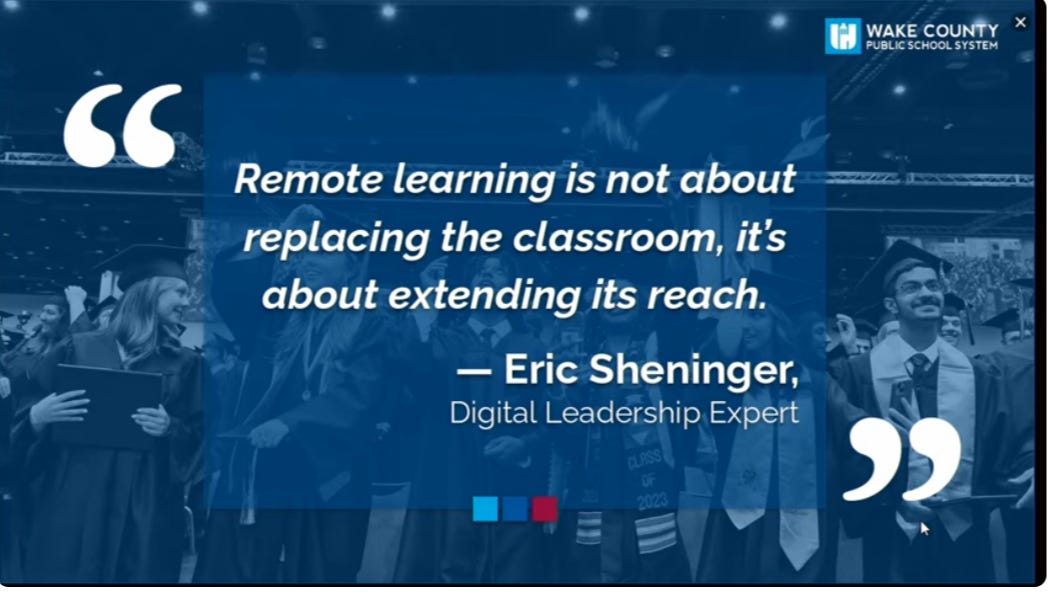WCPSS Unveils Remote Instruction Plan for Emergencies in 2025–2026
The plan is intended to be used sparingly, only in cases where events would otherwise necessitate students losing valuable instructional time.
Holly Springs, NC, Apr. 23, 2025
“Remote learning is not about replacing the classroom. It's about extending its reach.”
That quote, shared during the April 22 Wake County Public School System (WCPSS) Student Achievement Committee meeting, set the tone for a presentation on the district’s updated Remote Instruction Plan for the 2025–2026 school year. Officials emphasized that the plan is designed for limited use during emergencies such as severe weather, not as a substitute for traditional learning, but as a tool to preserve instructional time when schools are forced to close.
Emergency Use, Not Everyday Learning
The Remote Instruction Plan enables the district to transition to online instruction for up to five days or a total of 30 instructional hours during a given school year. This flexibility is permitted under North Carolina law. Still, it comes with strict conditions: remote days can only be used when no other calendar adjustments, such as banked or teacher workdays, are available.
Although WCPSS has filed similar plans annually since 2021, this is the first year it has seriously considered activation due to a sharp increase in weather-related disruptions.
Approval and Oversight
The district must submit its plan to the N.C. Department of Public Instruction (DPI) by June 30 to remain eligible. The plan itself does not require school board approval, but Policy 3102—which governs when and how remote instruction can be used—may soon be under review. That policy currently limits use of remote instruction to the final option after all other scheduling efforts have been exhausted.
Considerations for Equity and Well-being
In developing the plan, WCPSS leaders also stressed the importance of equity, access, and student well-being. The draft includes strategies to ensure that students with disabilities, English learners, and others requiring additional support are not left behind if remote learning is implemented. Behavioral health, engagement, and consistent communication are integral to the approach.
What Happens Next
While no action is required yet by the school board, the committee indicated that the Policy Committee will likely take up updates to Policy 3102 in the coming months. The final version of the plan is expected to be presented for review in May, ahead of its submission to the state.
Pros and Cons of WCPSS Remote Instruction Plan
During the meeting, WCPSS leaders emphasized that the plan is intended to be used sparingly, only in cases where events would otherwise necessitate students losing valuable instructional time. It’s an option designed with caution, meant to support, not supplant, what happens in the classroom.


